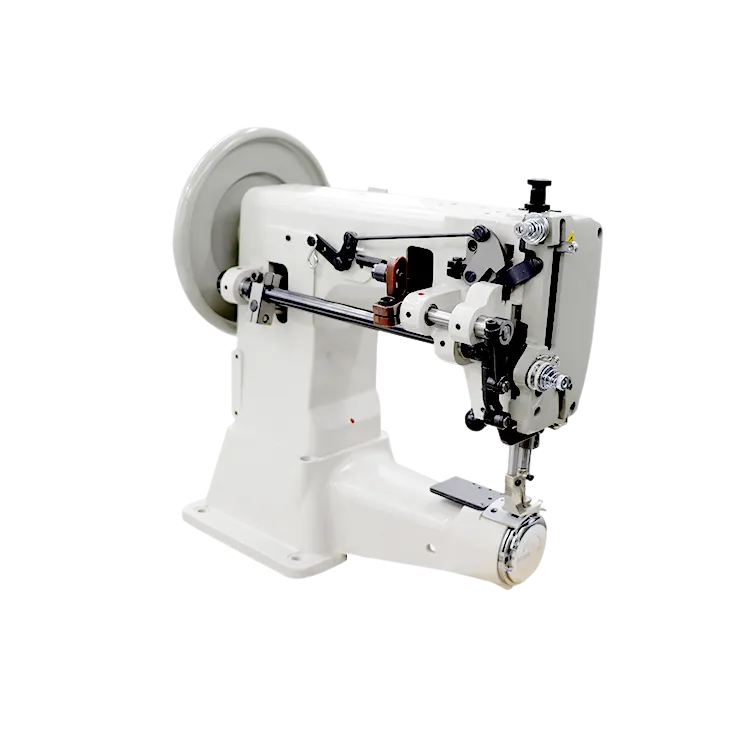industrial sewing machine needles for leather
Understanding Industrial Sewing Machine Needles for Leather
When it comes to sewing leather, selecting the right industrial sewing machine needle is crucial for achieving the best results. Leather, whether it's soft, nappa, or heavy-duty, presents specific challenges when it comes to sewing, making the choice of needle an especially important one. In this article, we will explore the types of needles specifically designed for industrial sewing on leather, their characteristics, and tips for use to ensure your projects turn out flawlessly.
Types of Needles
Industrial sewing machine needles come in a variety of types, each designed for specific materials and purposes. When sewing leather, the most commonly used needle types include
1. Leather Needles These have a unique cutting point designed to penetrate tough leather without causing damage. The needle's define point helps to create a clean hole, minimizing the risk of tearing the material.
2. Wedge Needles Similar to leather needles, wedge needles are designed specifically for thicker and tougher materials. They feature a blade-like point, making them ideal for heavy leather or multiple layers of fabric.
3. Universal Needles While not specifically designed for leather, universal needles can be used for lighter leather applications. However, for best results, especially on thicker or tougher types of leather, it's preferable to opt for leather-specific needles.
Needle Size
The size of the needle you choose is also paramount. The needle size is typically indicated by a number, with larger numbers representing a thicker needle. For leather sewing, it is recommended to use a needle size between 80/12 and 110/18, depending on the thickness of the leather being stitched. For delicate leather, a smaller size may suffice, while heavier, thicker leather requires a larger needle to penetrate effectively.
Thread Considerations
industrial sewing machine needles for leather

In addition to selecting the right needle, choosing the appropriate thread is essential when sewing leather. Heavy-duty polyester or nylon threads are often recommended for leather projects as they are strong and durable. It's also important to ensure that the thread type matches the needle size; using a thicker thread with a needle that is too small can lead to sewing complications, such as skipped stitches or broken needles.
Tension Settings and Machine Adjustment
Using the correct sewing machine tension setting is another critical factor when sewing leather. Leather requires a higher tension than standard fabrics to ensure the stitches are secure and the material does not slip. Before starting your project, test various tension settings on scrap pieces of leather to find the perfect balance.
Additionally, adjusting the walking foot or using a roller foot can aid in managing the thickness and movement of leather as it feeds through the machine. These attachments help maintain even feeding and prevent the leather from getting stuck or causing uneven stitching.
Tips for Successful Leather Sewing
1. Keep Needles Sharp Leather can dull needles quickly. Always start with a fresh needle to ensure clean stitching and prevent damage to the leather. 2. Use a Stitch Length Suitable for Leather A longer stitch length (about 3-4 mm) is generally recommended for leather projects. This not only promotes a professional look but also reduces the risk of damaging the leather.
3. Test Stitches on Scrap Pieces Before diving into your main project, practice on leftover pieces of leather. This allows you to adjust settings and get used to the leather's behavior under your sewing machine.
4. Consider Edge Finishing Leather frays less than woven textiles, but finishing edges with a leather edge tool can enhance the look and prolong the life of your leather project.
In conclusion, sewing leather with an industrial sewing machine demands careful consideration of needle type, size, thread choice, and machine settings. By understanding these aspects and taking appropriate measures, you can create professional-quality leather goods that not only look great but also stand the test of time. Whether you are crafting bags, belts, or other leather items, having the right tools and knowledge will set you on the path to success in your sewing projects.
-
Boost Production Efficiency with a Pattern Sewing MachineNewsAug.29,2025
-
Industrial Excellence with the Best Heavy Duty Sewing MachineNewsAug.29,2025
-
Precision and Power with the Best Pattern Sewing MachineNewsAug.29,2025
-
Reliable Bulk Packaging Starts With the Right FIBC Sewing MachineNewsAug.29,2025
-
Advanced Packaging Solutions: Elevate Productivity with Jumbo Bag Sewing Machine and Industrial Stitching EquipmentNewsAug.29,2025
-
High-Performance Solutions for Bulk Packaging: FIBC Sewing Machine and MoreNewsAug.29,2025
-
Maximize Efficiency with an Industrial Cylinder Arm Sewing MachineNewsAug.28,2025


























